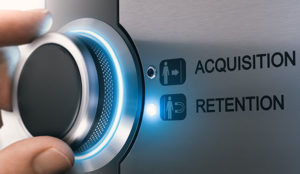Digital commerce transactions spiked in 2020 as consumers generated spending sprees from smartphones that produced 42 percent of all online shopping. As the pandemic continues to keep shoppers out of brick-and-mortar stores, new shopping behaviors continue to include smartphones to nudge products into consumers’ digital shopping carts.
U.S. consumers spent $28 billion using mobile devices last year, up 55 percent from 2019. The spending patterns through the end of 2020 show that all consumers — millennials and Gen Zers among them — are doing everything from mobile devices rather than laptops or desktops. That presents a challenge for all shop owners, physical and digital, to continue adapting to the market changes and consumer behavior, according to Dennis Reno, senior vice president and head of customer experience at Cyara.
Businesses must pivot their customer experience (CX) approaches to meet the demands of mobile-friendly and omnichannel experiences. That also creates silos when customer data is stored on various platforms. Customers get frustrated when their orders, profiles, or payment information is not connected across in-person and online shopping channels, Reno noted.
To remedy this, automation technology can help retailers monitor disparate data to overcome these silos for more cohesive CX. To keep up with morphing customer demands, businesses must pivot their customer experience approaches to enable mobile-friendly and omnichannel customer experiences, he observed.
“In the COVID-19 era, it is especially critical to invest in digital CX programs that will build brand loyalty,” Reno told CRM Buyer. “For a strong CX program, business leaders should prioritize listening to their customer base and make sure teams are responsive on social media and digital channels, as well as more traditional forms of B2C communication, in order to stay connected with customers during these uncertain times.”
CRM Buyer discussed with Reno more details about how mobile CX is influencing e-commerce and how these changes can help to improve the customer’s overall experience.
CRM Buyer: With the expanding migration of consumers from laptops and desktops to shopping mostly on mobile devices, how can businesses pivot their CX approaches to meet demands for mobile-friendly and omnichannel experiences?
Dennis Reno: To become more mobile-friendly, businesses should first make sure their website translates well on a mobile device and is just as easily viewable, navigable, and intuitive as on a computer browser. Also, ensure that customers can reach your customer service team through their preferred channel at any given time.
With omnichannel established as a standard form of B2C communication nowadays, CX programs should encompass all the various channels that consumers use, whether it is in-person, email, text, chat, or through social media platforms. This provides flexibility for the customer, who may need to be on the move while they resolve their issue.
In fact, many millennial and Gen-Z customers comment and direct message brands instead of using contact centers. So it is an ideal way to engage with customers through the platforms they prefer.
How costly is this pivoting process to mobile CX, and how much time must businesses devote to the process?
Reno: This process does not need to be costly or time-consuming thanks to easily deployable solutions, such as mobile shopping apps. Another key enabler to being able to pivot quickly is the adoption of Agile and DevOps practices.
In particular, automated testing can dramatically reduce development cycles. Being proactive by automating testing during the development of your CX systems can increase your business’s efficiency, decrease expenses, and improve customer retention.
How does an automated CX platform keep businesses in touch with customer data stored in separate e-commerce silos?
Reno: With omnichannel, unconnected data stays in multiple locations on various platforms.

SVP Customer Experience
That is becoming a worsening sore spot among both business contacts and shoppers. Unified interaction platforms can help retailers monitor disparate data across various communication channels to overcome these silos for more cohesive CX management and data analysis.
We are also seeing many of the larger players acquire customer data platforms. For example, the recent acquisition of Segment by Twilio provides a single view of customer data. However, it is impossible to know if a communication platform is working correctly without regular automated testing.
How can businesses utilize automation to ensure CX teams are ready for the spikes in mobile e-commerce traffic?
Reno: By testing ahead of spikes, CX teams can ensure that all customer journeys are working properly. From there, CX teams can use automated processes to streamline how the customer service team responds to requests. This helps the team make sure the business is operating as efficiently as possible.
That benefits two critical CX situations. One is when holidays arrive, and buyers become more active with ordering. The second is when you are having a sale that generates a large spike in Web traffic. In both cases, your team and your communications system will be fully equipped to handle the surge in the volume of requests.
Are automated CX platforms in general customer-facing or strictly accessible only internally?
Reno: Automated CX assurance is used internally to ensure that the customer has a seamless experience. This ensures chatbots, interactive voice responses (IVR), and other avenues for customer service are functioning correctly to avoid friction.
For example, if your call center keeps dropping calls when agents try to transfer a customer to another department, that can be a huge source of dissatisfaction and could potentially lead to losing customers. CX assurance and testing prevent these types of issues from being overlooked.
How does Cyara’s automated CX assurance platform specifically improve an unassisted mobile CX experience?
Reno: Cyara’s Automated CX Assurance platform proactively monitors contact center technology from the customer’s perspective. It quickly identifies issues to reduce the risk of downtime and poor-quality customer experiences.
Cyara Pulse simulates real-world customer interactions and delivers real-time insight in the palm of your hand through the app. This enables CX teams to spot issues and troubleshoot problems. It also ensures that the business is delivering the best possible experience for customers every time.


























































